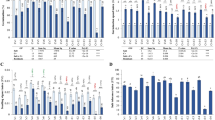Abstract
The response of spring wheat to heat stress has been determined in several hot wheat growing environments worldwide on different types of germplasm. Physiological data has been collected to identify potential traits to assist in the empirical breeding for heat tolerance. Initial studies focused on 10 established varieties to determine genetic diversity for heat tolerance, identify association between heat tolerance and traits measured, and evaluate genotype by environment interaction (G x E). Yields from over 40 hot environments were analysed for G x E, and relative humidity (RH) was identified as the major factor determining relative genotype ranking. Further analysis focused on 16 environments: those with low RH and relatively high yields, i.e., over 2.5 t ha-1. For these environments, mean yield of lines correlated with a number of physiological traits measured in Mexico, including canopy temperature depression (CTD), membrane thermostability, leaf conductance and photosynthetic rate at heading, chlorophyll content during grainfilling, leaf internal CO2 concentration, and dark respiration. Morphological traits were measured in all environments and the following showed associations with yield: above ground biomass at maturity, days from emergence to anthesis and to maturity, grain number m-2, and ground cover estimated visually after heading. Subsequent studies focused on breeding material, namely recombinant inbred lines derived from crosses between parents of contrasting heat tolerance, and 60 advanced breeding lines selected for performance under heat stress. The genetic basis for association between heat tolerance and CTD was established by demonstrating a correlation between the two traits in RILs (recombinant inbred lines). Data from RILs, as well as from the 60 advanced lines grown at several international locations, indicated CTD to be a powerful and robust selection criterion for heat tolerance.
Similar content being viewed by others
References
Al-Khatib, K. & G.M. Paulsen, 1984. Mode of high temperature injury to wheat during grain development. Physiologia Plantarum (Denmark) 61: 363–368.
Amani I., R.A. Fischer & M.P. Reynolds, 1996. Canopy temperature depression associated with yield of irrigated spring wheat cultivars in a hot climate. J Agron Crop Sci 176: 119–129.
CIMMYT, 1995. CIMMYT/NARS Consultancy on ME1 Bread Wheat Breeding. Wheat Special Report No. 38. CIMMYT, Mexico, D.F.
Crossa, J., P.L. Cornelius, K. Sayre & I. Ortiz-Monasterio, 1995. A shifted multiplicative model fusion method for grouping environments without cultivar rank change. Crop Sci 35: 54–62.
Falconer, D.S., 1989. Introduction to Quantitative Genetics. John Wiley and Sons, Inc., New York.
Fanizza, G., L. Ricciardi & C. Bagnulo, 1991. Leaf greenness measurements to evaluate water stressed genotypes in Vitis Vinifera. Euphytica 55(1): 27–31.
Reynolds, M.P., M. Balota, M.I.B. Delgado, I. Amani, & R.A. Fischer, 1994. Physiological and morphological traits associated with spring wheat yield under hot, dry irrigated conditions. Aust J Plant Physiol 21: 717–730.
Steel, R.G.D. & J.H. Torrie, 1980. Principles and Procedures of Statistics, 2nd Ed. McGraw-Hill Book Co., New York
Author information
Authors and Affiliations
Rights and permissions
About this article
Cite this article
Reynolds, M., Singh, R., Ibrahim, A. et al. Evaluating physiological traits to complement empirical selection for wheat in warm environments. Euphytica 100, 85–94 (1998). https://doi.org/10.1023/A:1018355906553
Issue Date:
DOI: https://doi.org/10.1023/A:1018355906553




